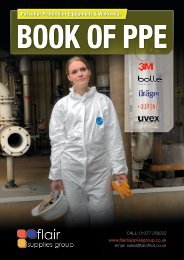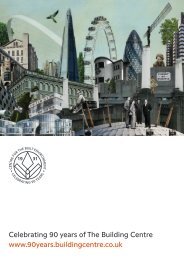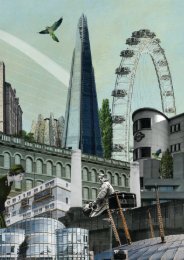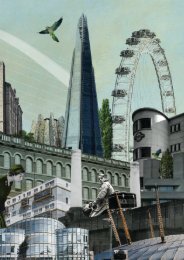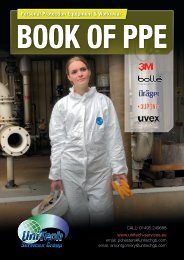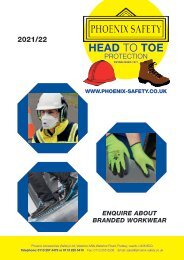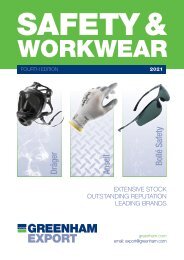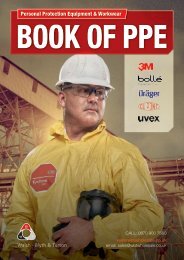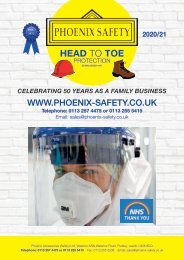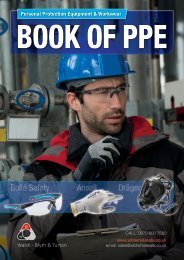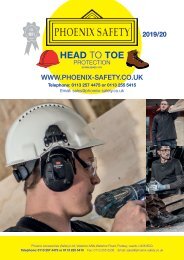Create successful ePaper yourself
Turn your PDF publications into a flip-book with our unique Google optimized e-Paper software.
Workplace Safety Equipment<br />
Buying Guide<br />
Managing and Selecting Equipment<br />
The work at height regulations 2005 sets out a hierarchy <strong>of</strong> controls that employers are required to<br />
follow when selecting the appropriate measures to protect those working at height.<br />
Employer’s and those in control <strong>of</strong> any working at height activities, must ensure work is properly<br />
planned and supervised. This includes using the correct type <strong>of</strong> equipment for working at height.<br />
Low risk tasks that are relatively straight forward will be less challenging, when it comes to planning.<br />
Employer’s and those in control must assess the risks first before carrying out any work.<br />
Employer’s must:<br />
• Take a sensible, practical approach when considering equipment for work at height<br />
• Factors to weigh up include; The work to be undertaken, the working environment,<br />
access and egress, the height <strong>of</strong> the task, the duration and frequency and the condition<br />
<strong>of</strong> the surface being worked on<br />
There will also be certain low-risk situations where common sense tells you no particular<br />
precaution is necessary.<br />
How Do You Select The Right Equipment?<br />
When selecting equipment for work at height, employers must:<br />
• Provide the most suitable equipment appropriate for the work<br />
• Take account <strong>of</strong> factors such as the working conditions, the nature, frequency and duration<br />
<strong>of</strong> the work<br />
If you are unsure which type <strong>of</strong> equipment to use, once you have considered the risks,<br />
please contact our sales team who will be happy to help.<br />
Health & Safety<br />
Fall from height remains one <strong>of</strong> the most<br />
common causes <strong>of</strong> serious injury and death<br />
in the industry today. This fact, coupled with<br />
tightening regulations governing working at<br />
height, results in a greater need to consider<br />
how to protect those exposed to potential<br />
injury from a fall.<br />
How To Make Sure The Equipment Is In Good Condition?<br />
Work equipment, for example scaffolding, needs to be assembled or installed according to the<br />
manufacturer’s instructions and in keeping with the industry guidelines.<br />
Where the safety <strong>of</strong> the work equipment depends on how it has been installed or assembled, an<br />
employer should ensure it is not used until it has been inspected in that position by a competent<br />
person. A competent person is someone who has the necessary skills, experience and knowledge<br />
to manage health and safety.<br />
Inspection should be carried out at regular intervals as required and every time something happens<br />
that may affect the safety and stability <strong>of</strong> the equipment, eg adverse weather.<br />
170



